Amazing old-school restaurant dishes that disappeared from menus
Last orders
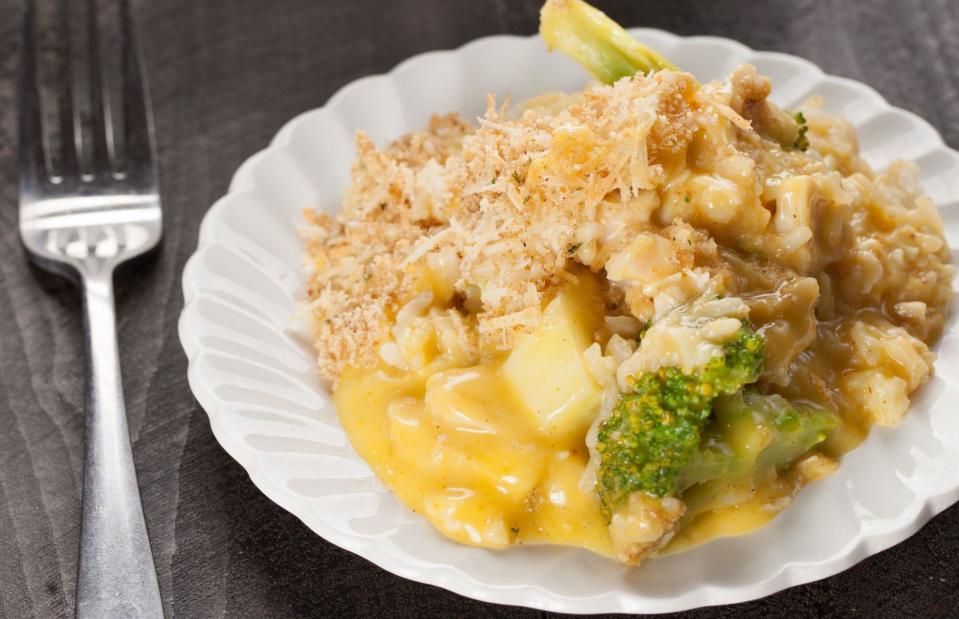
Vezzani Photography/Shutterstock
Gone are the days when you’d saunter down to your favourite restaurant and find a platter of vol-au-vents, followed by fish swimming in cream and flambéed Crêpes Suzette to finish. Now, unless you’re eating in a deliberately retro-cool restaurant or find a spot where time has stood still, you’ll struggle to find any of these once-popular dishes on the menu, which is a crying shame as some of them are truly delicious.
Veal Marsala
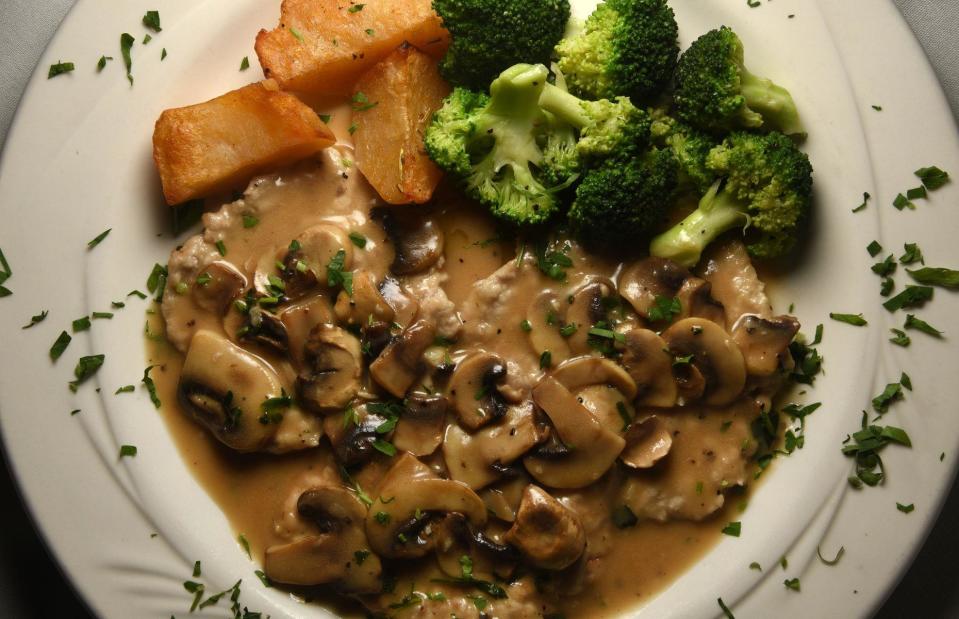
TDC Photography/Shutterstock
Once a mainstay of Italian-American restaurant menus, veal Marsala is only really served at the most old-school of spots these days. To make it, veal cutlets are pounded thin, dredged in flour, pan-fried in butter, then served smothered in a glossy sauce of Marsala wine, mushrooms and parsley.
Cherries Jubilee
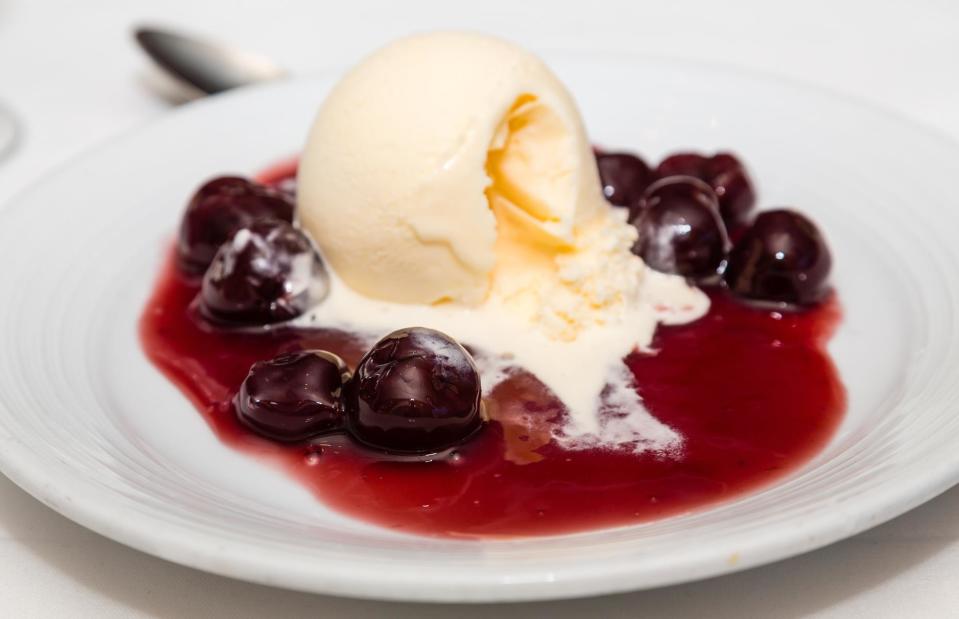
Darryl Brooks/Shutterstock
Setting foods – and especially desserts – aflame was all the rage in the 1950s. Cherries Jubilee is a dramatic dish where whole cherries are cooked in liqueur, flambéed (usually tableside) and served with vanilla ice cream. The recipe is generally credited to Auguste Escoffier, who is said to have created the dish for Queen Victoria’s Golden Jubilee celebration in 1887. Having hit its peak in the 1950s and 1960s, it’s fallen out of favour now, but we think it would still make the perfect finale for a celebration dinner.
Relish tray
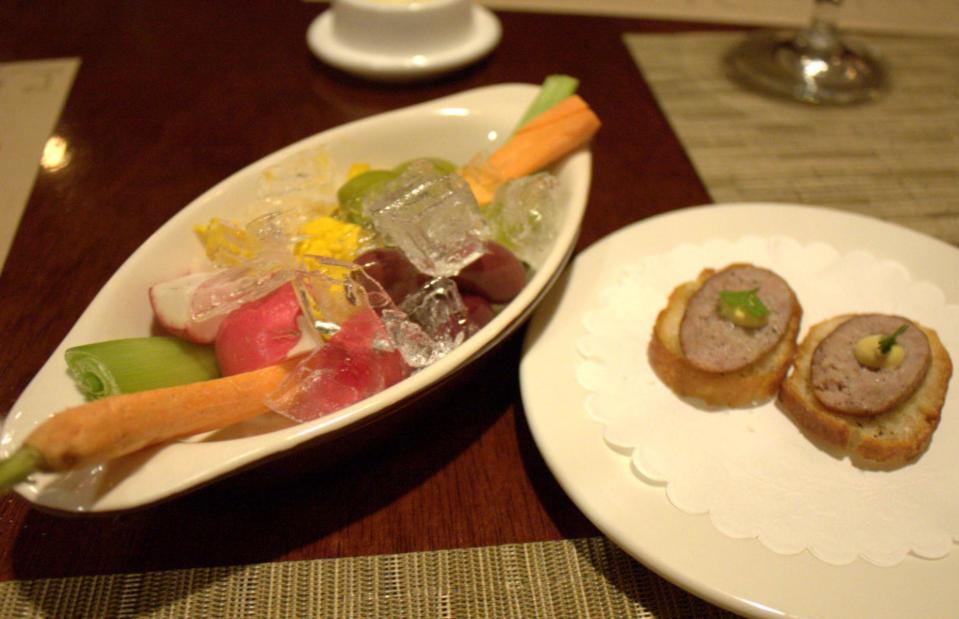
Krista/Flickr/CC BY 2.0 DEED
Essentially the grazing board of the mid-19th century, the relish tray is an amazing relic of a bygone era of dining. From the 1930s to the 1970s, it was customary for high-end restaurants and steakhouses in the US to welcome diners with a complimentary appetiser of raw vegetables, pickles and dips, usually served on an ornate pressed glass tray with a bowl of icy water (to keep the veggies crisp). These days, many American families still serve a version of a relish tray during holiday celebrations, but they’ve all but disappeared from restaurants.
Crab Louie
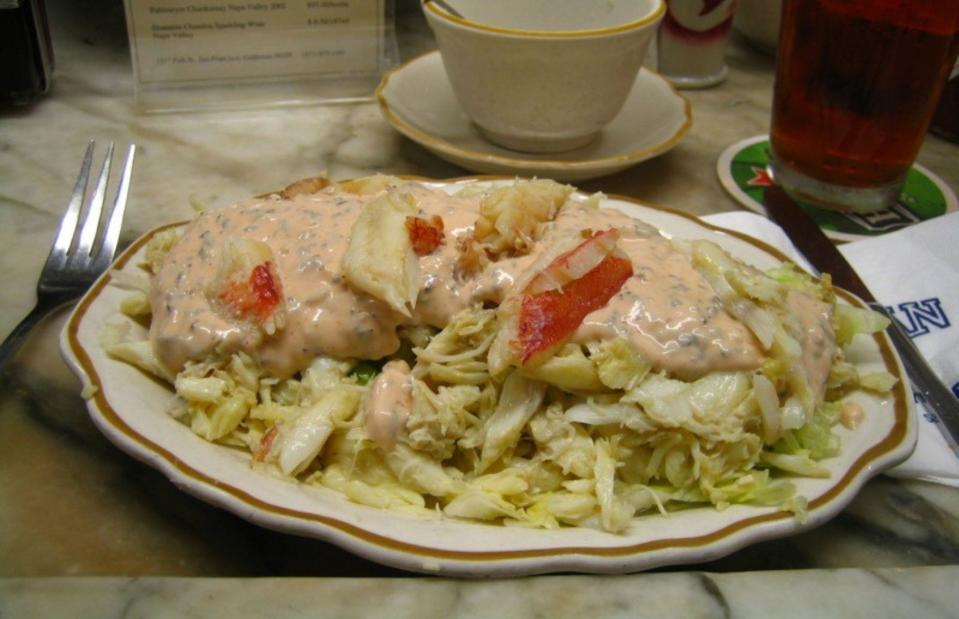
Brett/Flickr/CC BY-NC-ND 2.0 DEED
From Waldorf to Caesar, there are many famous American salads that are loved all over the world – but a lesser-known favourite is Crab Louie, a mouth-watering dish of crab, eggs, asparagus, tomatoes and iceberg lettuce, all bound together in a creamy, Thousand Island–style sauce. The dish dates back to early 20th-century San Francisco and it was once the height of fashion in foodie circles. Its popularity has diminished hugely since its heyday, but it can still be found on menus in some hotels and restaurants on America’s West Coast.
Ham in parsley aspic
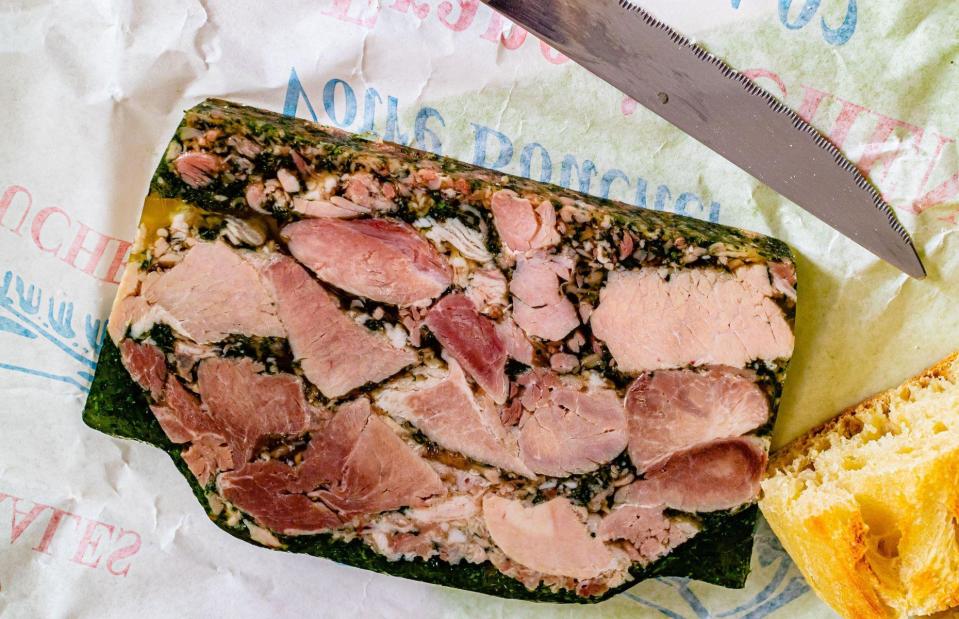
James Hodgson/Alamy Stock Photo
Another French-inspired food trend brought to the masses by the great Julia Child, encasing vegetables and meat in aspic was huge in the 1960s. Jambon persillé en gelée – also known as ham in parsley aspic – was one of the most popular restaurant dishes of this type. Aspic has certainly fallen out of favour in modern restaurants, but if you can get past the idea of consuming a cold savoury jelly, a ham and herb terrine is a pretty delicious dish.
Frogs' legs Provencal
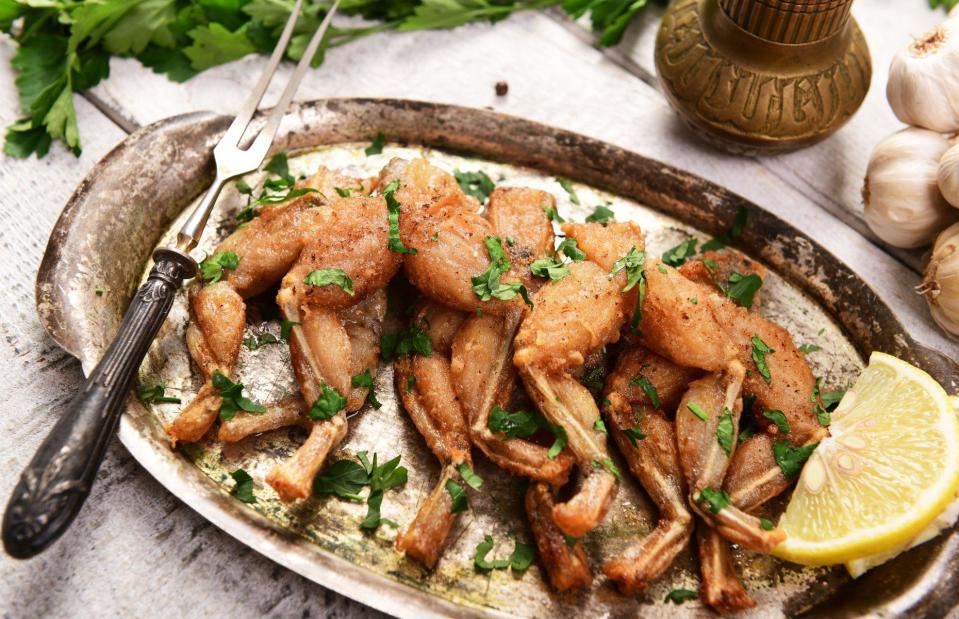
Piotr Krzeslak/Shutterstock
This traditional delicacy has been eaten for over a thousand years in France, but there was a point in early 20th-century food culture when it was the epitome of fine dining across the globe. Frogs' legs served Provencal – pan-fried in butter, with plenty of garlic and parsley – were once a very fashionable appetiser, but nowadays they’re considered more of a culinary curiosity. Nevertheless, they’re still common in French and Chinese cuisine, and they're also eaten deep-fried in some southern US states, particularly in areas with a prominent French influence.
Duck à l’orange
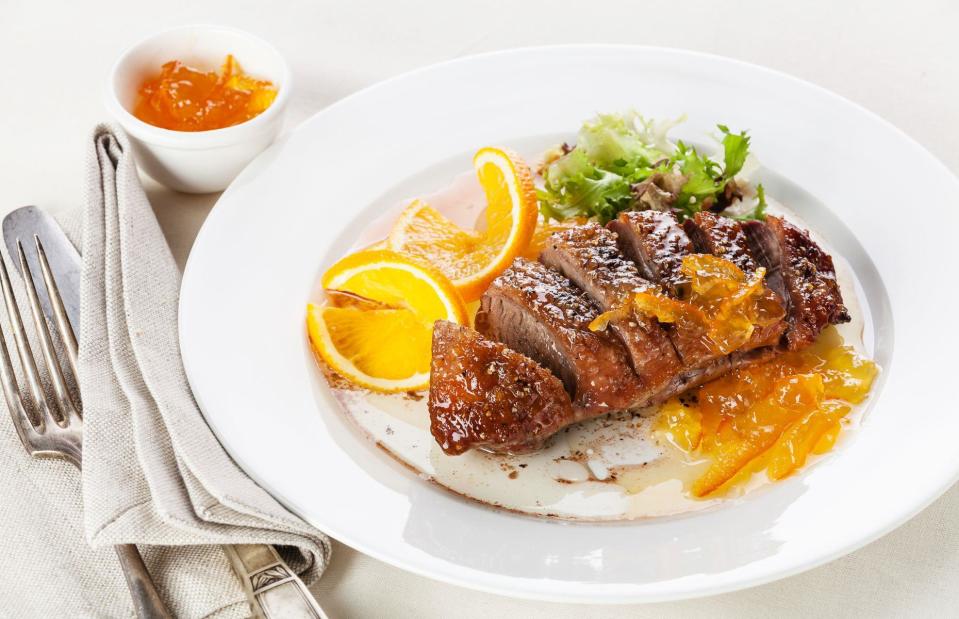
Natalia Lisovskaya/Shutterstock
No 1960s dinner party would have been complete without this classic meat and fruit combo. The roots of duck à l’orange are believed to lie in France, but it was iconic TV chef Julia Child who helped make the dish a staple of restaurant menus in the US and UK. The potential for elegant presentation – and the zingy combination of sticky-sweet and sour flavours – made it particularly suited to fine dining establishments.
Peach Melba
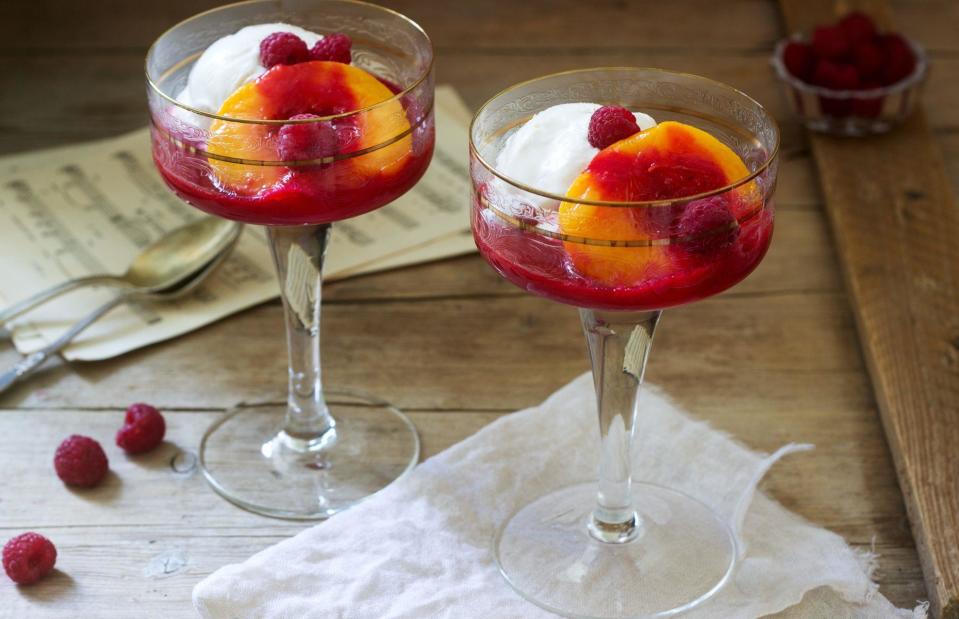
Danilova Janna/Shutterstock
Peach Melba, a joyfully simple dessert of poached peaches and ice cream, balanced with sharp, tart raspberry sauce, was a classic on menus around the world for much of the 20th century. It’s another legendary dish that was invented by French chef Auguste Escoffier, who concocted it at London’s Savoy Hotel in around 1893 to honour the Australian soprano, Nellie Melbain. It’s far less common now – but with its beautifully balanced flavours and striking colours, perhaps it deserves a comeback.
Vichyssoise
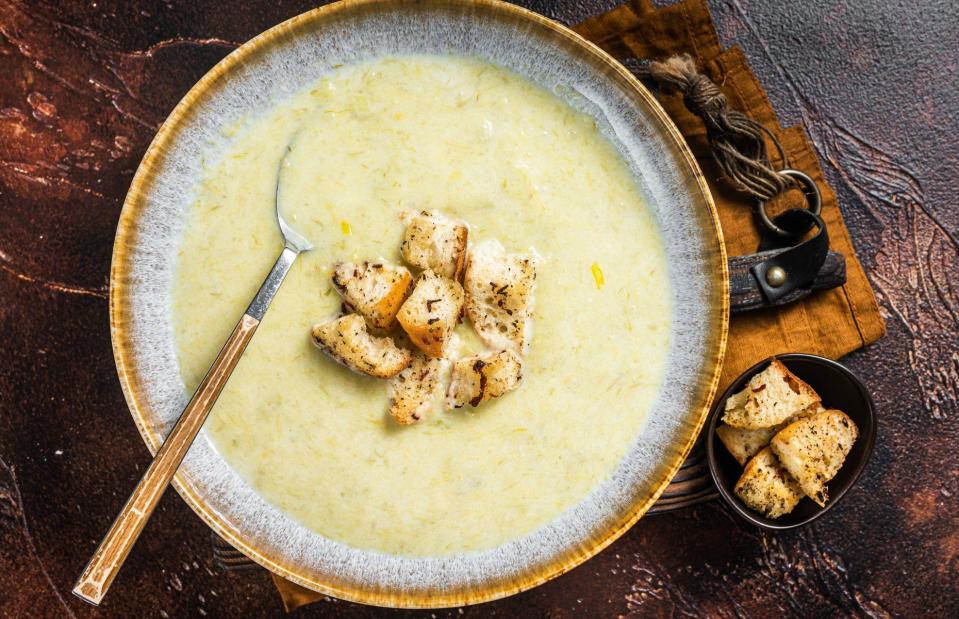
Mironov Vladimir/Shutterstock
Cold leek and potato soup might not sound like the most appetising of dishes, but vichyssoise was the height of sophistication at one point. The divisive soup was invented in 1917 at the Ritz-Carlton Hotel in New York – by a French chef, of course – and was a mainstay of fine dining menus for many decades. Leeks, onions, potatoes, chicken broth and cream were puréed together to create a velvety texture. Nowadays it tends only to be found on decidedly old-fashioned menus, which might be a relief for those who struggle with the pronunciation.
Sole Véronique
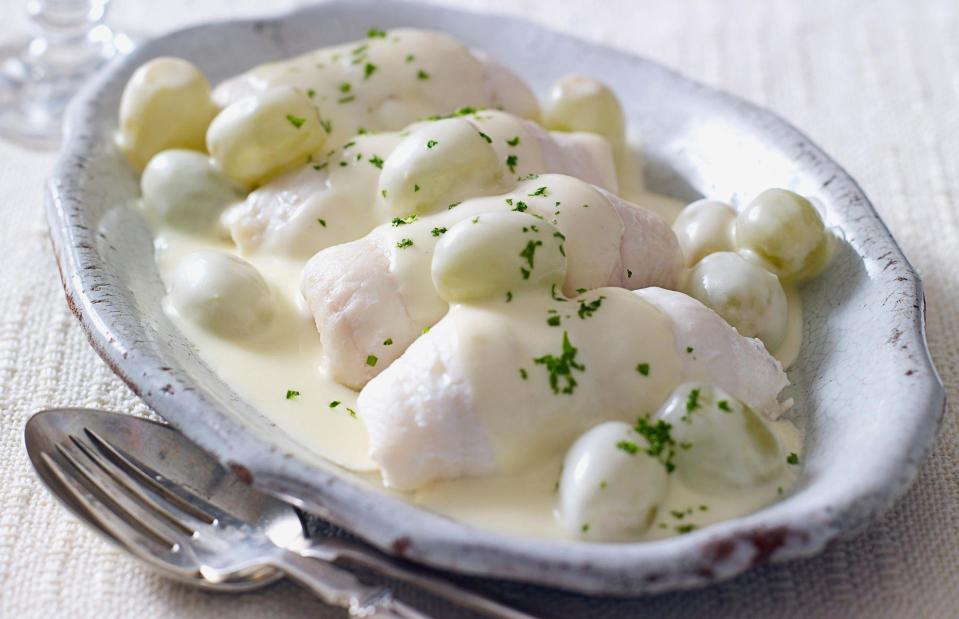
Dorling Kindersley ltd/Alamy Stock Photo
Another turn-of-the-century invention from Auguste Escoffier, this dish was part of a trend of serving flaky white fish swimming in creamy sauce. To make it, Dover sole fillets were poached in white wine, then topped with a sauce of double cream, herbs and – strange though it may sound – grapes. The combination is surprisingly delicious, and the dish was deservedly popular back in the day, especially in French restaurants and bistros.
Stewed kidneys
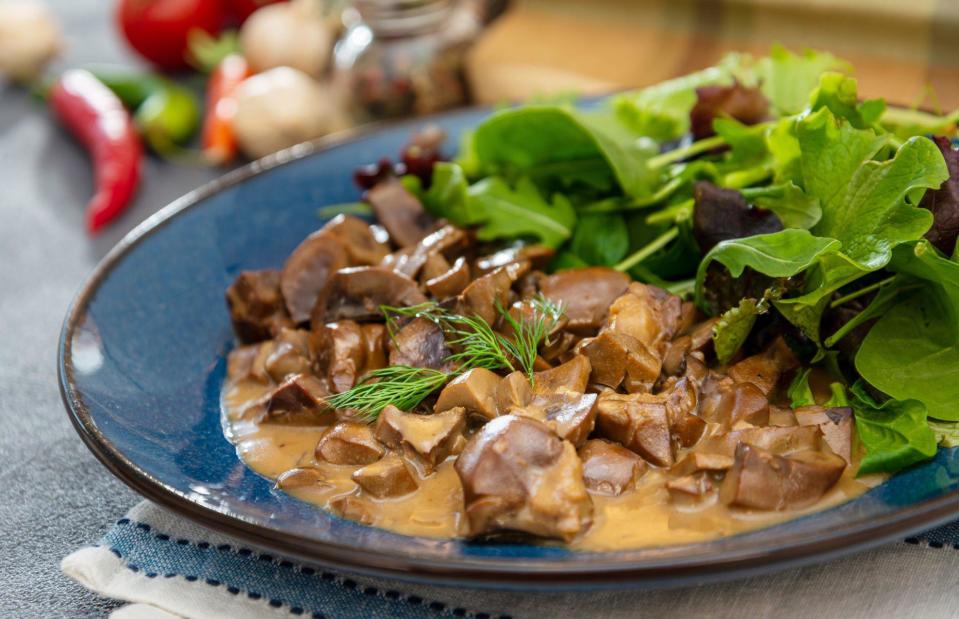
ilolab/Shutterstock
With the rise of restaurants that focus on ‘nose to tail’ eating, offal has rocketed in popularity lately, though stewed kidneys are still a step too far for some. However, in the early 20th century, the fanciest of restaurants always had lamb or beef kidneys on the menu, usually simmered in a rich, meaty stock with garlic and herbs, and often served with toast. Devilled kidneys – lamb kidneys cooked in a spiced sauce – were also incredibly popular.
Mutton chops
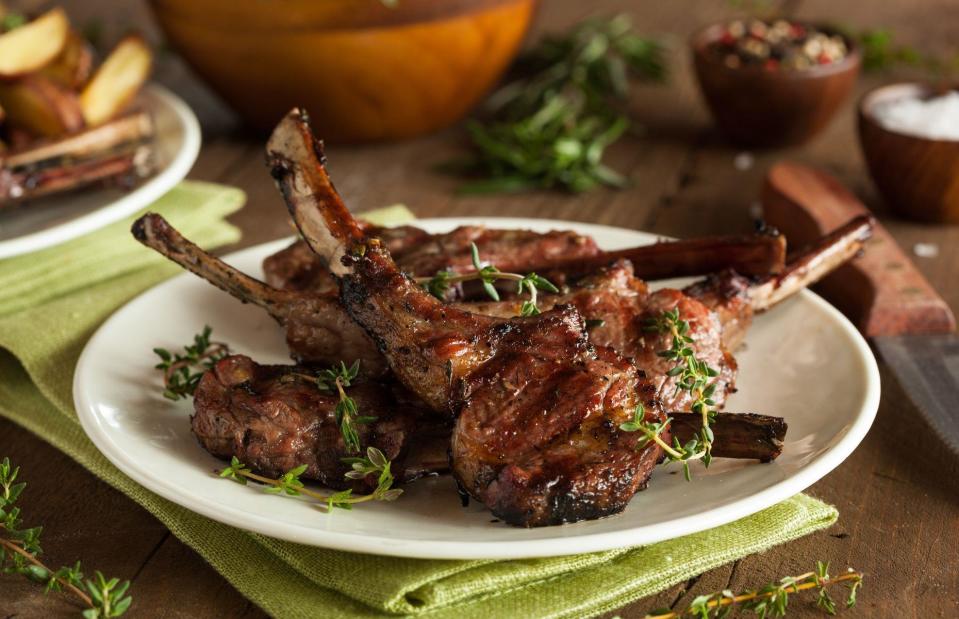
Brent Hofacker/Shutterstock
Usually grilled, basted in jus and served on the bone, mutton chops were a menu mainstay at restaurants for much of the 20th century. One of the most famous places to get your hands on the meaty delicacy was Keens Steakhouse in New York City. Today, lamb has taken over in popularity and mutton chops are rarely seen – which is a shame, because chefs rave about the rich, slightly gamey taste.
Fresh grapefruit

Elizabeth Whittaker/Public Domain Pictures
Imagine sitting down at a restaurant and being served a halved grapefruit adorned with a maraschino cherry; rightfully, you’d be pretty baffled. But in the 1960s and 1970s, this was a pretty standard restaurant starter, offered alongside options such as prawn cocktail, sliced melon or even a simple glass of fruit juice – perhaps to counterbalance the typically rich main courses of the era.
Chicken à la King
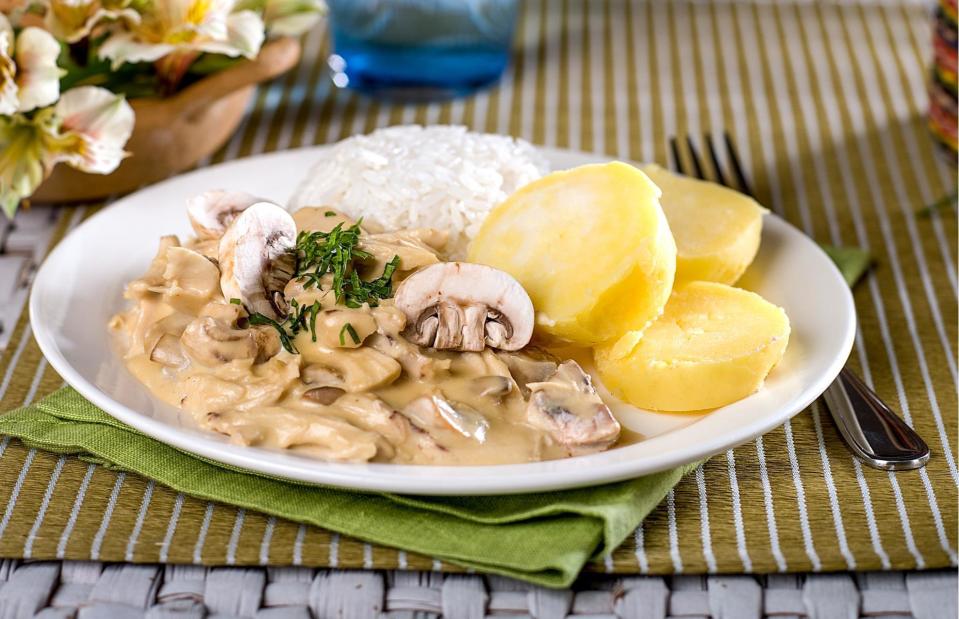
Hann Leon Stock/Shutterstock
Chicken à la King now seems more like a home-cooked supper than a fancy restaurant dish. But this comforting, cream-laced combination of peas, carrots, mushrooms and peppers, served with rice or potatoes or on toast, appeared on many upscale menus during the 1950s and 1960s, and was a particular hit at wedding breakfasts. By the 1980s, its popularity had plummeted – perhaps because it isn’t particularly pretty.
Vol-au-vents
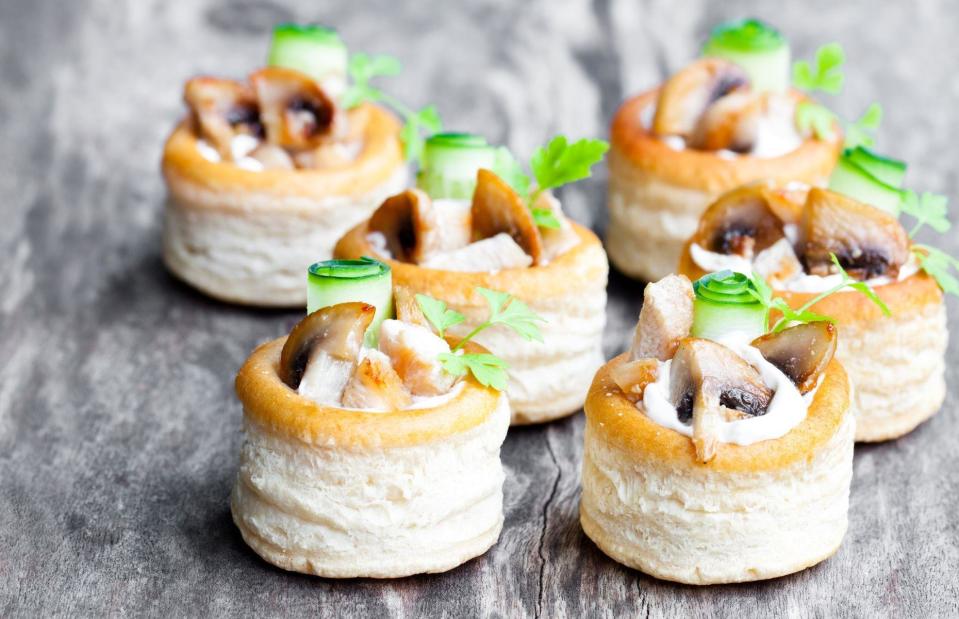
Elena Zajchikova/Shutterstock
A favourite at 1970s dinner parties, these light-as-a-feather puff pastry cases came with fillings like cooked mushrooms, coronation chicken and prawn mayonnaise. Vol-au-vents date all the way back to 18th-century France, and were once the height of sophisticated restaurant dining – but these days, you’re unlikely to find them on many menus outside of Belgium, where they remain surprisingly popular.
Fondue
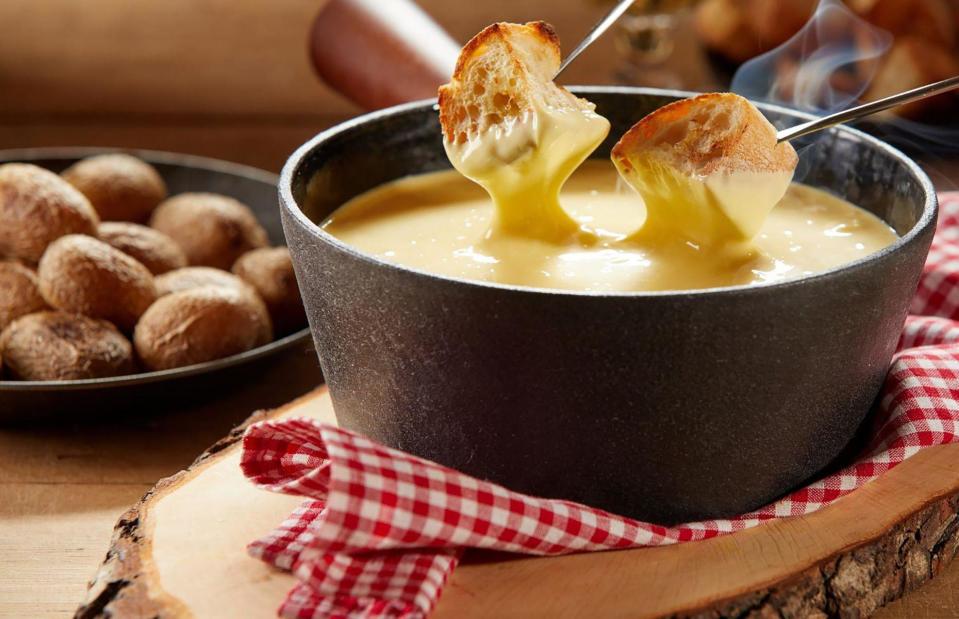
stockcreations/Shutterstock
A cheese-lover's dream, fondue was one of the hottest dining trends of the 1970s, coming to the attention of the masses after featuring at the 1964 New York World’s Fair. Those bread-dipping days were numbered, however, as people slowly but surely turned towards more health-conscious foods. The good news is that fondue is now starting to make a comeback, with specialist fondue restaurants and retro-themed menus popping up.
Bananas Foster
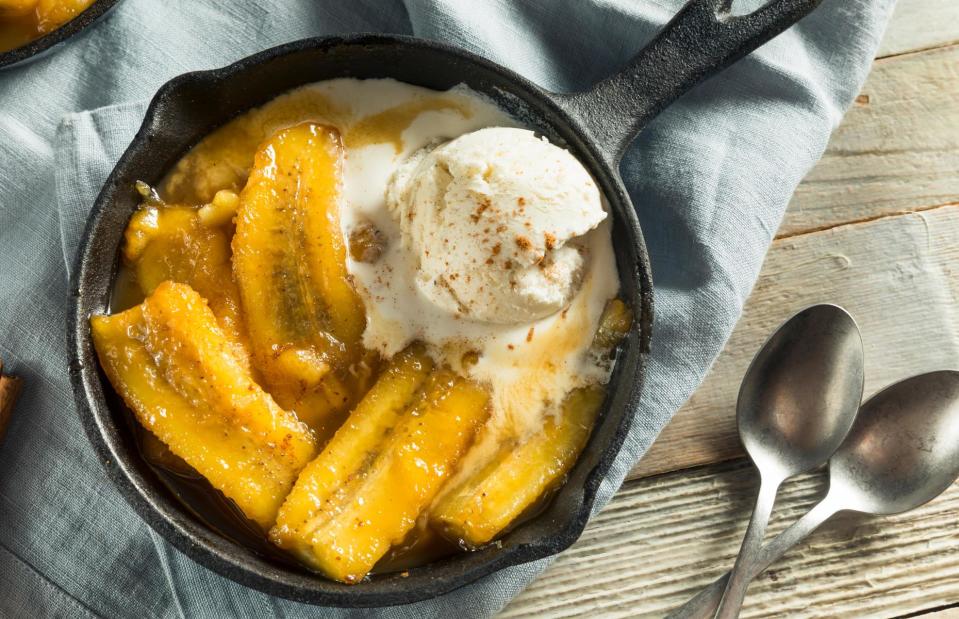
Brent Hofacker/Shutterstock
An absolutely scrumptious combination of bananas and vanilla ice cream, smothered in a boozy, buttery sauce, it’s a wonder bananas Foster hasn’t had a renaissance. First created at New Orleans restaurant Brennan’s in 1951, this classic dessert is famously doused in rum and set alight. While it's still a favourite at Brennan’s, it isn’t as common on other restaurant menus as it was back in the day – perhaps because the showiness of tableside flambéing is considered a little old-fashioned.
Coq au vin
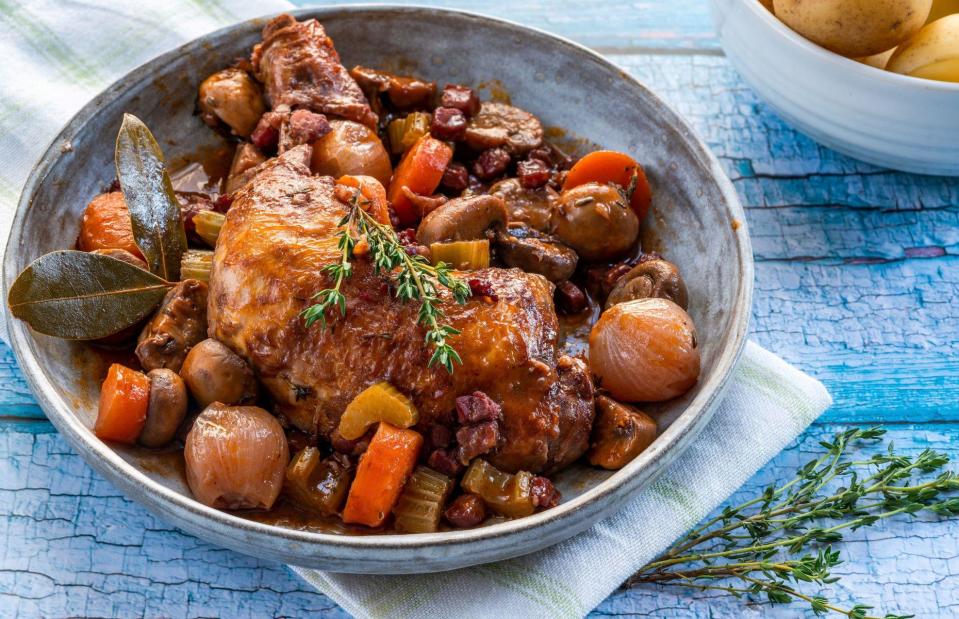
BBA Photography/Shutterstock
French for ‘cockerel in wine’, coq au vin is another classic that was popularised in the US by the powerhouse that was Julia Child – the TV chef included a recipe in her seminal 1960s cookbook, Mastering the Art of French Cooking. To make the dish, chicken is simmered in a rich red wine sauce with carrots, lardons and mushrooms, making it a real cockle-warmer, especially when served with mashed potato on the side. Sadly, it’s rarely seen on bistro menus nowadays.
Trout amandine

Karl Allgaeuer/Shutterstock
Trout amandine was once almost as common as sole Véronique on fancy restaurant menus in the US – particularly in New Orleans. Here, trout fillets are pan-fried to perfection, then finished in a brown butter sauce along with plenty of toasted almonds and lemon juice. Elegant and flavourful, we think this classic French dish is definitely due a comeback.
Chicken Tetrazzini
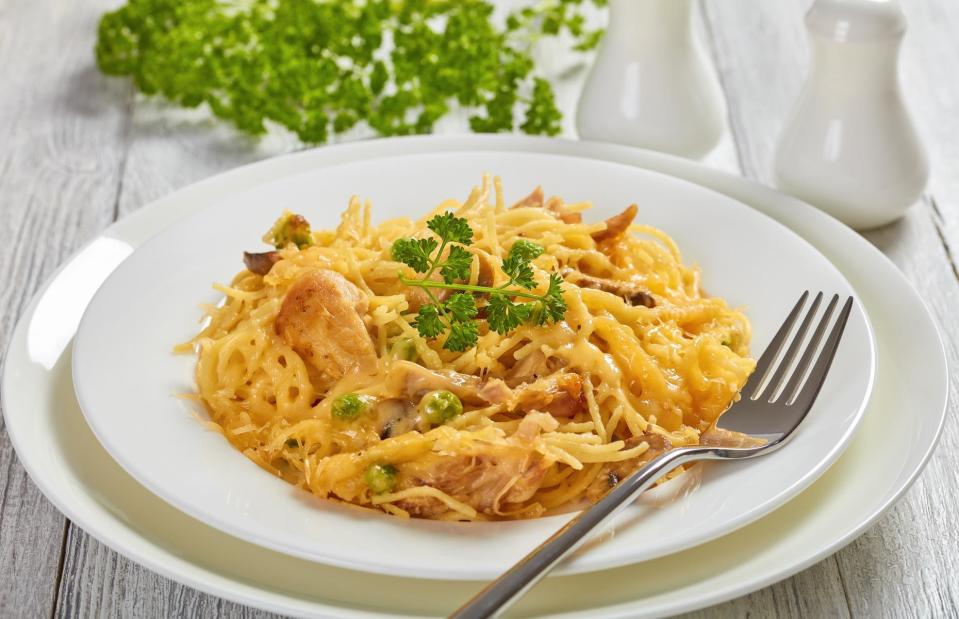
from my point of view/Shutterstock
Named after Italian opera star Luisa Tetrazzini, and believed to have been invented in San Francisco, this dish of baked spaghetti, chicken (or sometimes turkey), mushrooms, Parmesan and cream resembles something you might throw together in tired desperation. Not that it isn’t delicious, of course – it's just another dish that, having been hugely popular from the early 20th century until the 1960s, fell out of favour as presentation became more important.
Crêpes Suzette
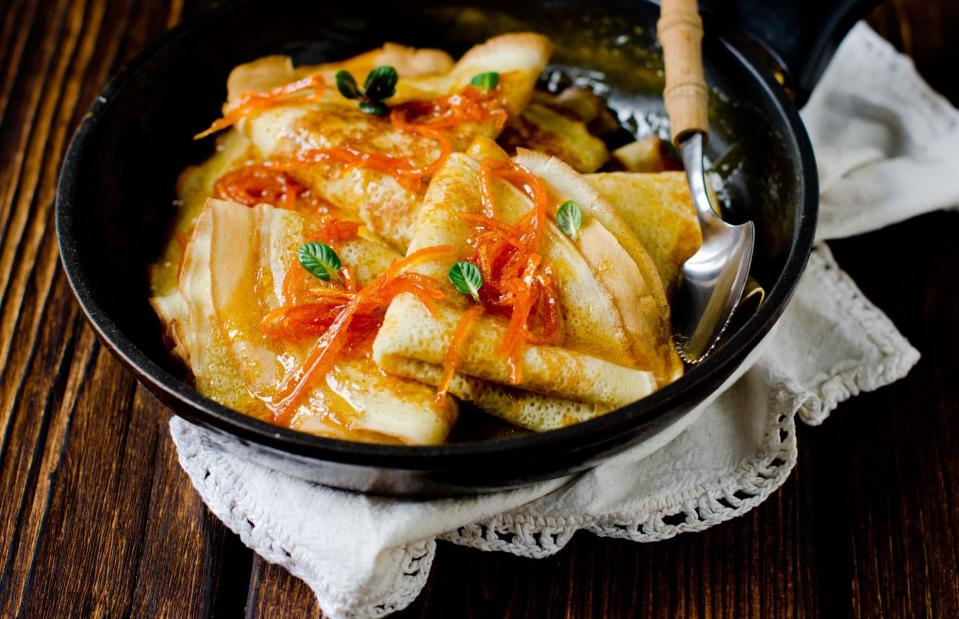
Teleginatania/Shutterstock
Perhaps the queen of tableside flambé dishes, crêpes Suzette is all about the spectacle: pancakes coated in caramel sauce, orange juice and orange zest are drowned in an orange liqueur, then set alight in the pan. Though it's not the symbol of luxury it once was, this flamboyant dessert does still hold a kind of cult status – and, like the prawn cocktail, it's a favourite at retro-themed dinner parties.
Devils on horseback
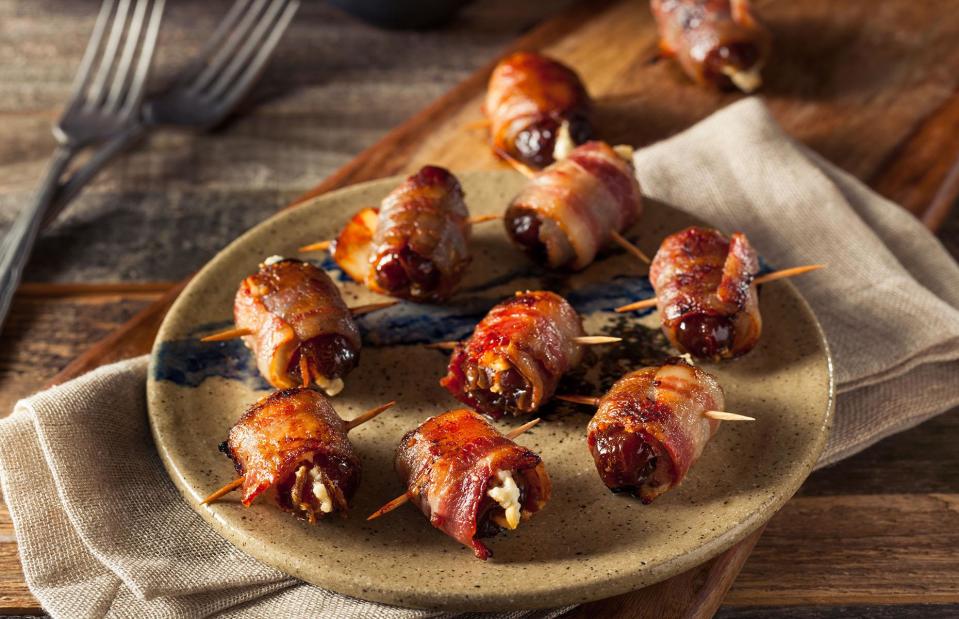
Brent Hofacker/Shutterstock
They look (and sound) pretty strange, but don't be fazed: these bite-sized starters are surprisingly delicious, and balance sweet, salty and savoury flavours in the most beautiful way. Consisting of cheese or almond-stuffed dates wrapped in crispy bacon, they're a variation on angels on horseback – bacon-wrapped shucked oysters. A classic Christmas canapé, devils on horseback have a history that stretches back to 19th-century Britain, though their popularity peaked in the 1970s and early 1980s.
Molten chocolate cake
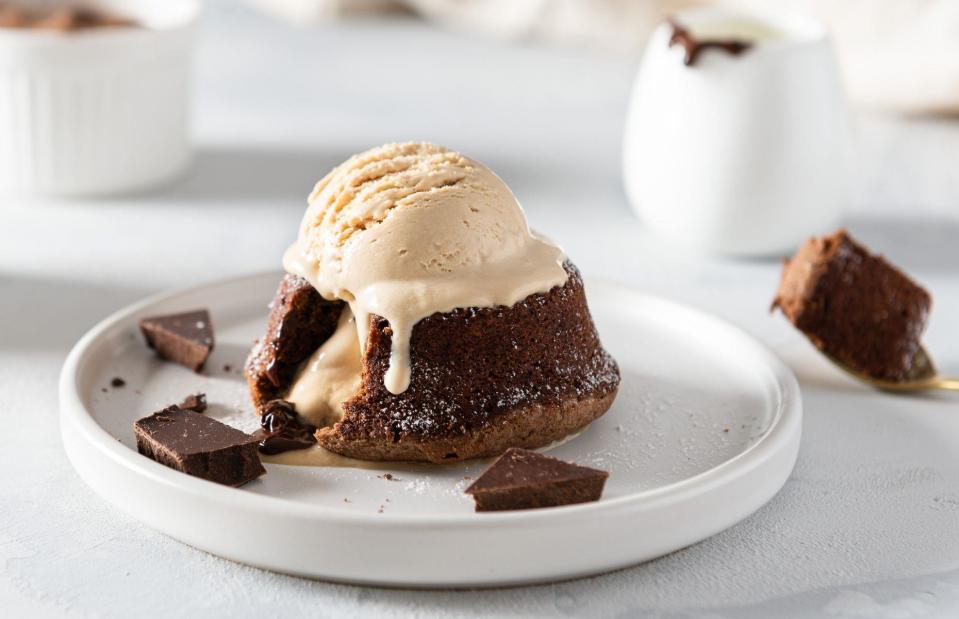
Dina Photo Stories/Shutterstock
One of the more recent creations on our list, it’s unclear whether this gooey pudding was invented in the US or France – but who really cares, so long as it has the all-important ooze in the middle? Debuting on restaurant menus in the late 1990s, it was the definition of a romantic dessert, and one you had to order at the start of the meal, so the chef had plenty of notice. Deliberately undercooked to create the ‘lava flow’ of chocolate in the centre, the cakes are still erupting in home kitchens and some restaurants worldwide, although they’re not as ubiquitous as they once were.
Kalter hund
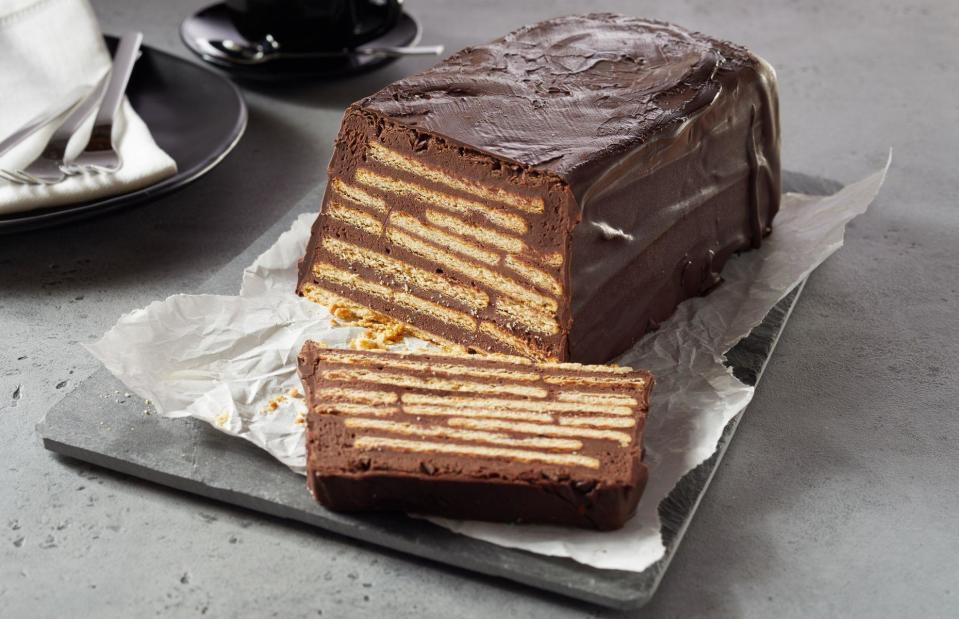
stockcreations/Shutterstock
This retro German dessert definitely deserves a comeback. Kalter hund translates into English as ‘cold dog’, but don’t let the unappetising name put you off – this simple uncooked chocolate cake is absolutely delicious. Once popular in East Germany, it's known under many different names, including 'hedgehog slice' and 'cold biscuit cake'. Whatever the name, it's a gooey layer cake made with butter biscuits, coconut fat and chocolate, with a little rum flavouring.
Chicken Divan
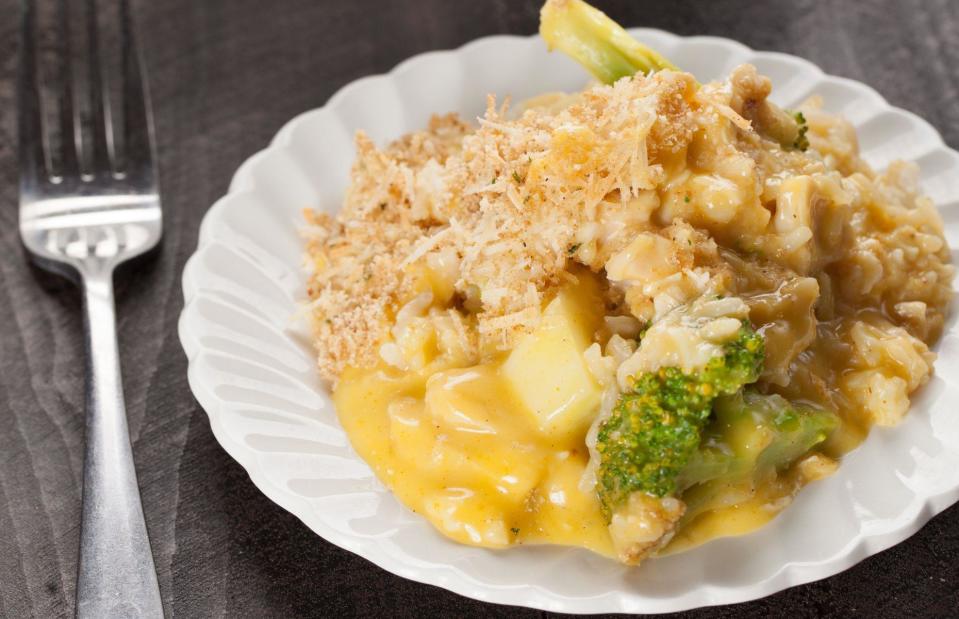
Vezzani Photography/Shutterstock
Here's another old-fashioned dish you don't see on restaurant menus today. This classic American casserole, a hearty combination of chicken and broccoli in a creamy Mornay sauce, actually has pretty glamorous beginnings. It’s named after the Divan Parisien Restaurant at the Chatham Hotel in New York City, where it was served as the signature dish in the early 20th century. Today, it’s definitely something you’re more likely to cook at home.
Steak Diane
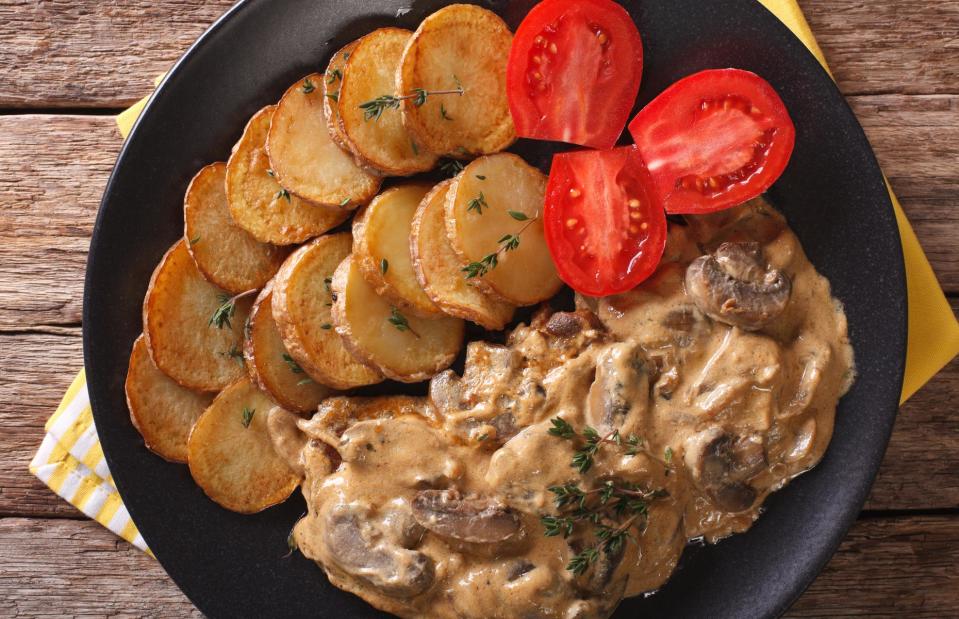
AS Food Studio/Shutterstock
It wasn't just sweet desserts that got the flambé treatment back in the mid-20th century – poor old steak Diane regularly went up in flames in restaurants in the 1950s and 1960s, too. Steaks were smothered in a rich combination of shallots, mustard, stock, Cognac, black pepper and Worcestershire sauce, then set alight, to the delight of diners. No one really knows who Diane was exactly, but one thing's for sure: the dish emerged in the USA.
Pork medallions
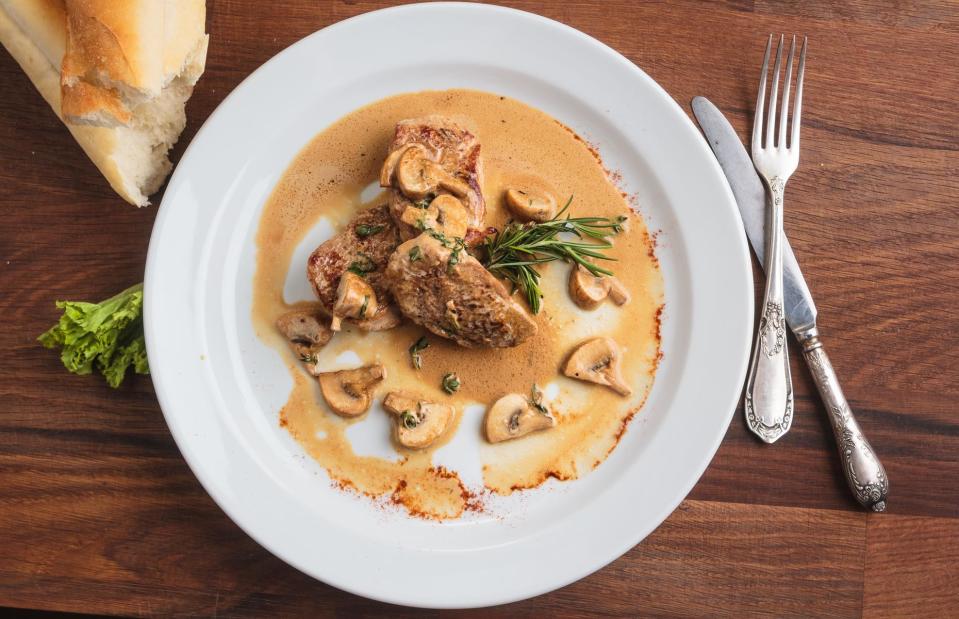
Denis Kornilov/Shutterstock
Every bistro worth its salt (and gigantic pepper mill) would have had these tender pork tenderloin rounds on its menu in the 1970s, usually smothered in a creamy mustard sauce. While you’ll often find something similar in restaurants today, the word ‘medallions’ is rarely used, aside from in an ironic, retro kind of way.
Veal cordon bleu
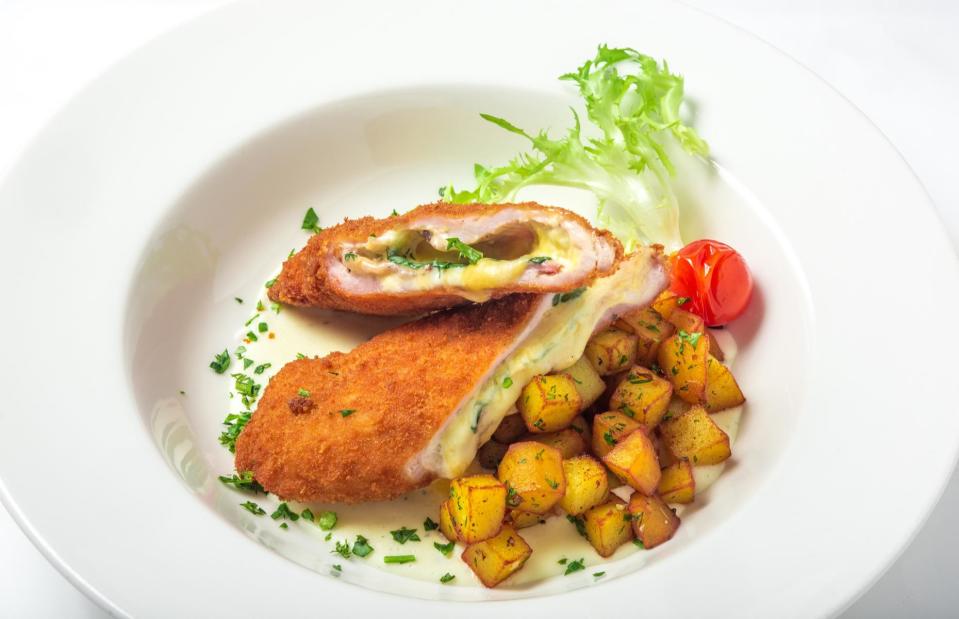
nazarovsergey/Shutterstock
From the 1950s until the 1990s, diners couldn't get enough of these breaded veal cutlets, stuffed with ham and cheese, at French restaurants across the US. However, whether it’s because rich foods and French cuisine aren’t currently top of the trend tree, or because we like our plates to be prettier, dishes like this are far less prevalent on modern restaurant menus.
Minute steak
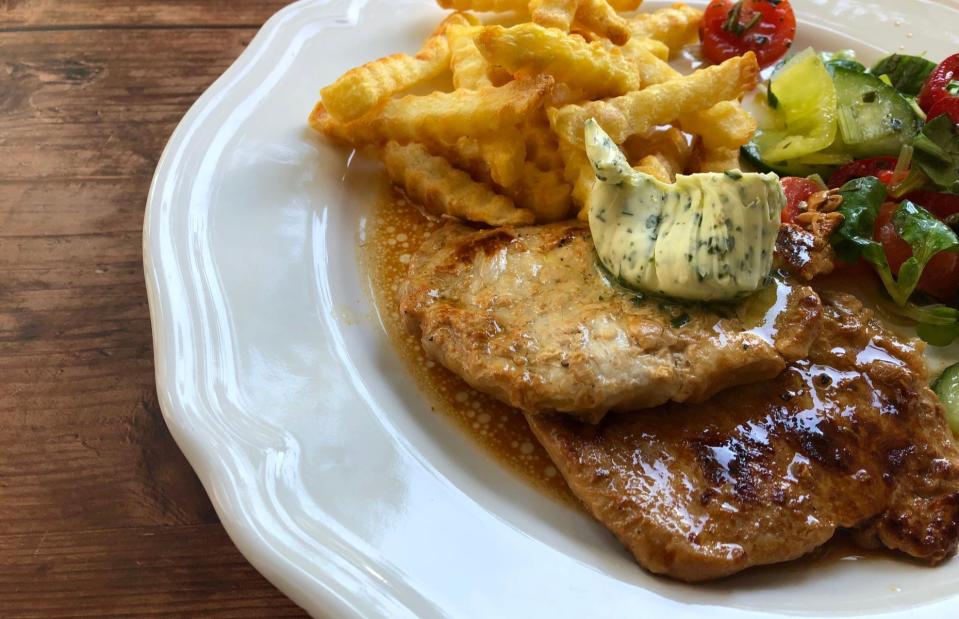
Nagy Julia/Shutterstock
The minute steak – pounded to within an inch of its life – didn’t come rare, medium or well-done. It came after being cooked for a minute, which usually meant brown through and through. Popular in the mid-20th century, these wafer-thin steaks are still served in some casual cafés, with fries and a round of herb butter. However, they're rarely seen on fancy restaurant menus these days.
Coquilles Saint-Jacques
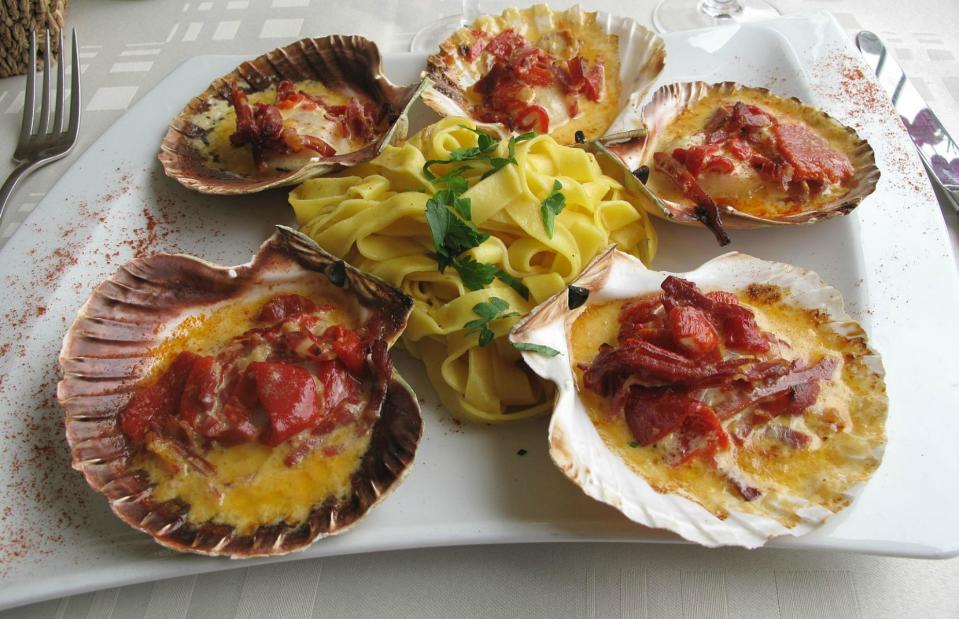
Tangopaso/Wikimedia Commons/CC-BY-SA-3.0
Another rich and creamy seafood dish with French origins, coquilles Saint-Jacques consists of scallops sautéed in butter, topped with a mix of Gruyère cheese and breadcrumbs, then finished to a golden, bubbly brown under the grill. Celebrity chef Julia Child and cookery writer Elizabeth David helped to spread the dish's popularity in the US in the 1960s, but you'll only see it now in the most old-school of French restaurants.
Chicken in a basket
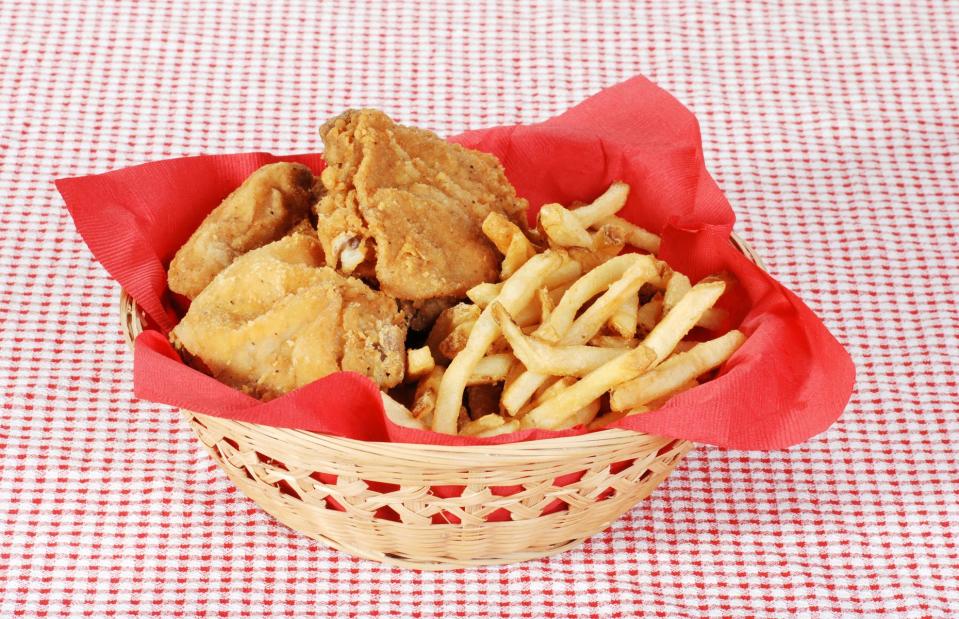
Michael C. Gray/Shutterstock
Believed to have been invented at a pub in the Cotswolds region of the UK, chicken in a basket is exactly what it sounds like – battered, deep-fried chicken served in a plastic basket with fries. It was wildly popular in pubs and casual restaurants throughout Britain in the late 1960s and 1970s – in fact, it became so ubiquitous in venues offering live entertainment that the spots became known to performers as the ‘chicken-in-a-basket circuit’. Today, you’re more likely to see fried chicken and chips served on plates, though the trend of serving burgers on chopping boards could be seen as a modern reinvention of the basket trend.
Food towers

Robert-Horvat/Shutterstock
Tall food grew (and grew, and grew) as a trend in the 1980s and 1990s, when top chefs (mainly in the US and UK) competed to serve the most vertiginous creations possible. They’d layer up foods like fruit salads and sushi using metal rings or soup cans as moulds, supported by cylinders of dried-out bread. It was the zenith of fine dining presentation until it fell out of fashion at the end of the century.
Surf ’n' turf
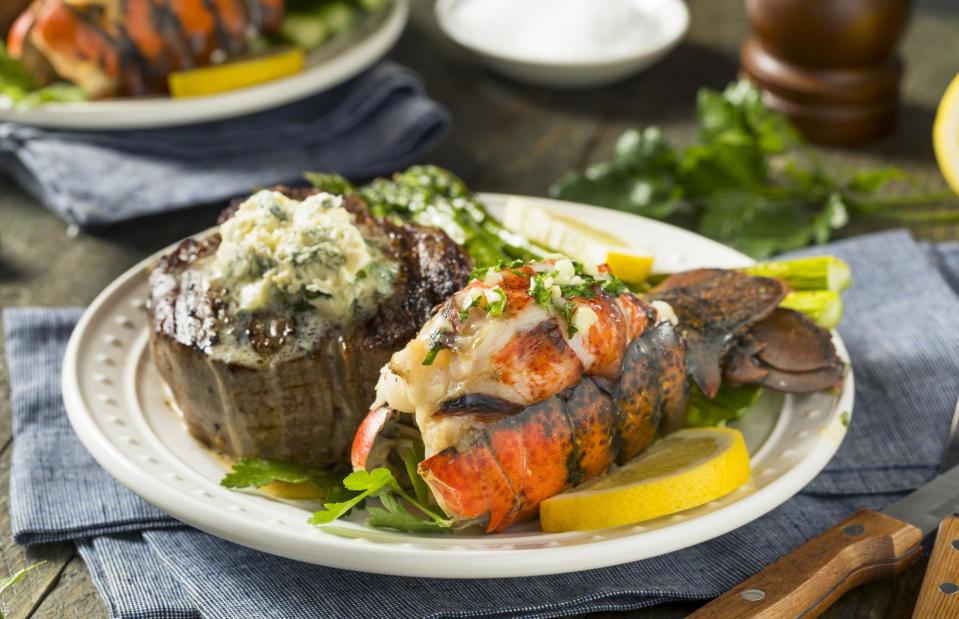
Brent Hofacker/Shutterstock
There's still a certain glamour and luxury attatched to surf ’n' turf. From the 1960s until the 1990s, you couldn’t move for enormous platters of steak and lobster – ideal for diners with massive appetites, or those who find it hard to decide. You can still find hulking plates of seafood and red meat in some pubs, steakhouses and barbecue joints, but the combination has gone from ground-breaking to rather old-fashioned.
Grützwurst
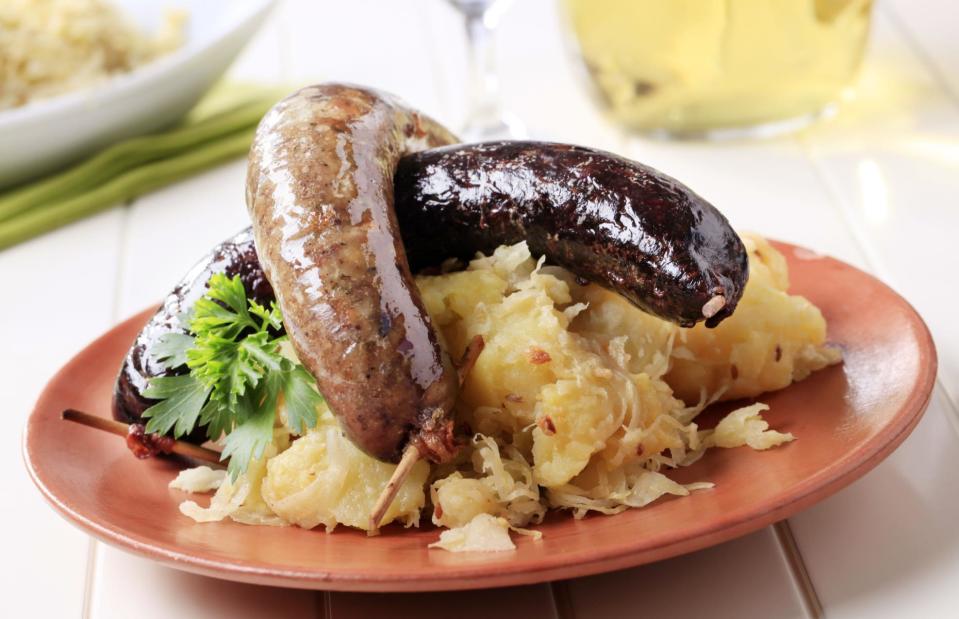
Viktor1/Shutterstock
There’s more to German sausages than the bratwurst. Invented in the former German Democratic Republic, East Germany, the grützwurst is a smoked sausage similar to black pudding, and is made of pork, pigs’ blood and groats. Due to the colouring of the dish, it’s also known under the macabre name of tote oma ('dead grandma'). The smoked sausage is traditionally served with boiled potatoes and sauerkraut, and was a restaurant and beer hall staple in its heyday.
Oyster pan roast
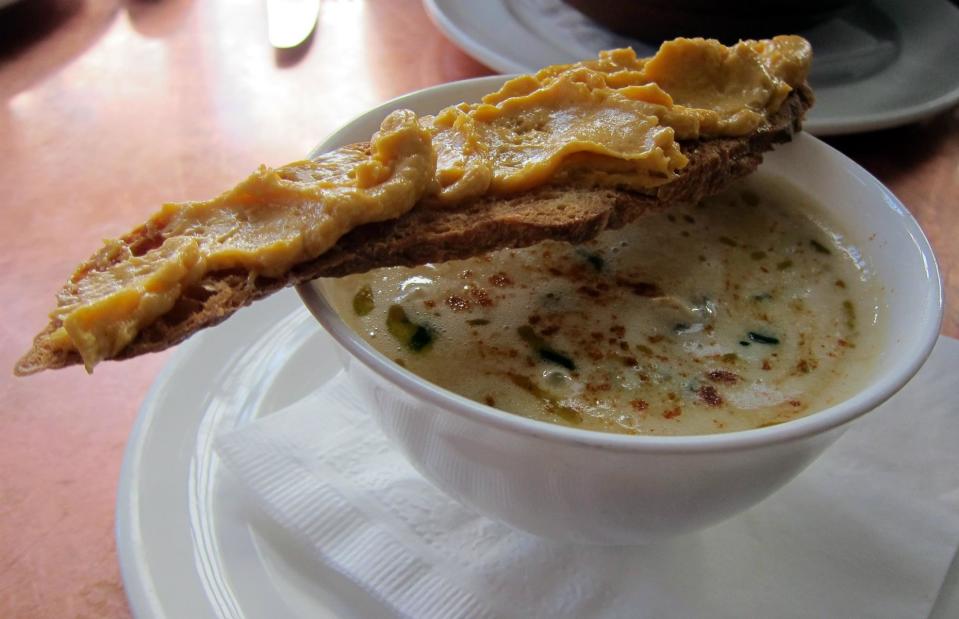
Wally Gobetz/Flickr/CC BY-NC-ND 2.0
Oysters tend to be served fresh and on the half shell now, but many old-school recipes saw them cooked (sometimes to oblivion) and smothered in something creamy or cheesy – or both. This 'pan roast’ of oysters, simmered in a cream sauce like a soup, was hugely popular along the East Coast of the US in the first half of the 20th century.
Potato skins

iuliia_n/Shutterstock
This thrifty dish was a starter of choice in the 1980s, and effectively an ingenious way for restaurants to use up leftover potato skins. They were either served ‘loaded’ – with toppings including cheese, sour cream, chives and chilli con carne – or just crispy and golden, with dips on the side. It was guaranteed that anyone who didn’t order them would sneak a few from your plate.
Garlic mushrooms
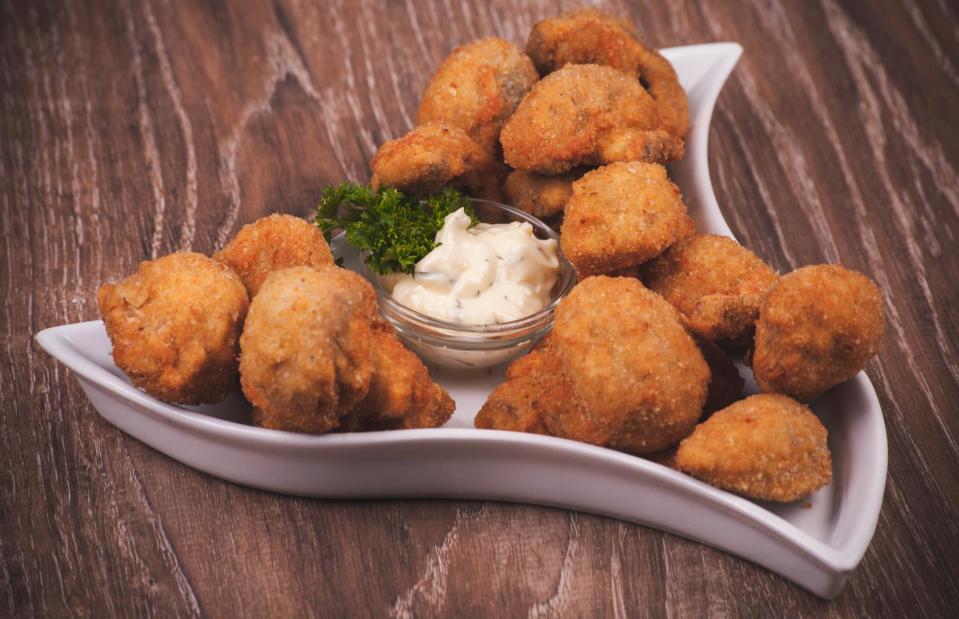
Maksym Fesenko/Shutterstock
Remember when mushrooms were a staple starter on pretty much every menu, from pubs to fancy bistros? Whether it was cute-as-a-button button mushrooms swimming in garlic butter, or breaded and fried fungi served with a creamy, garlicky dip, it was pretty much guaranteed that at least half of those on your table would order them. We say bring them back!
Denver sandwich
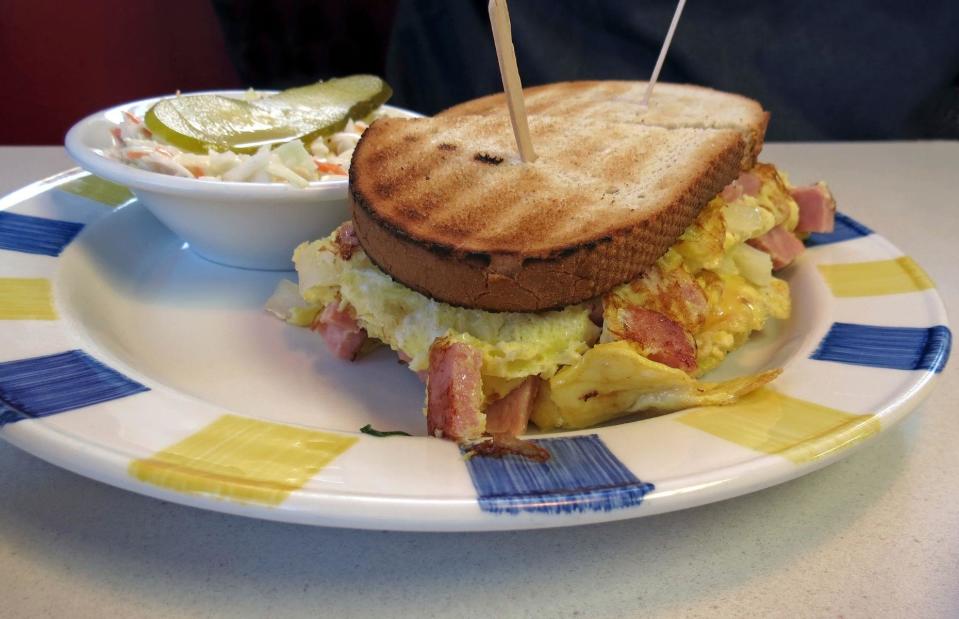
NikDesigns/Shutterstock
Which came first: the omelette, or the sandwich? Theories abound as to the origins of the Denver omelette (containing onion, peppers, cheese, ham and mushrooms) and the frankly genius idea to slap it into a sandwich. Depending on who you ask, it's the creation of Chinese immigrants working on US railroads, or restaurateurs operating in the Colorado city. It’s still widely considered Denver's signature dish, although it’s rarely found on menus in diners and cafés elsewhere these days.
Pasta primavera
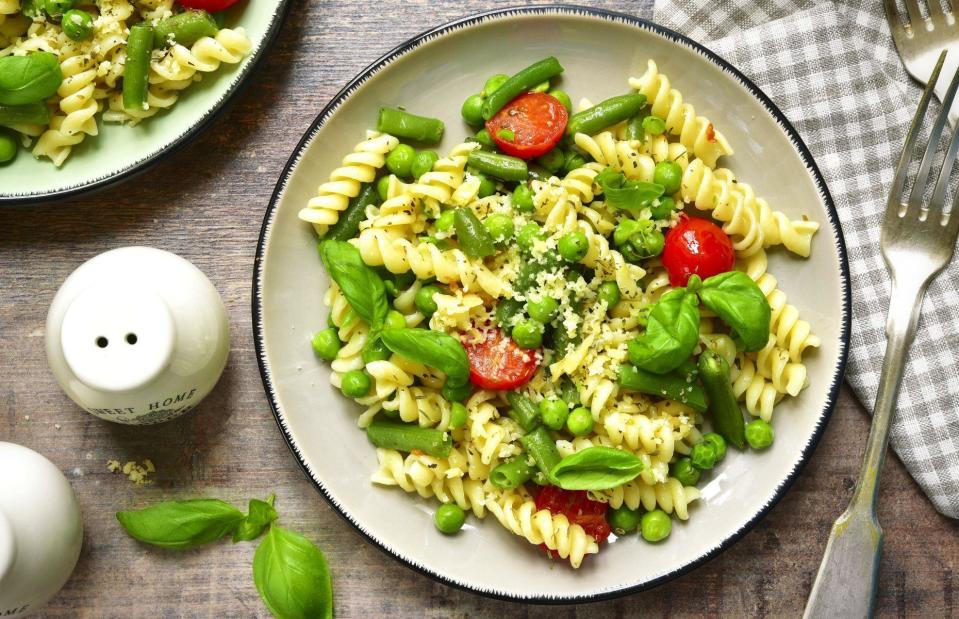
Liliya Kandrashevich/Shutterstock
It may have been usurped by the huge variety of interesting and inventive vegetarian dishes available today but, when it was created at New York City’s swish Le Cirque restaurant in the 1970s, pasta primavera stood out as one of the few delicious options for non-carnivores. The dish, at its simplest, is a combination of pasta and fresh, seasonal vegetables, bound together with broth or tomato sauce.
Now discover our ranking of the world's most delicious dishes. How many have you tried?


